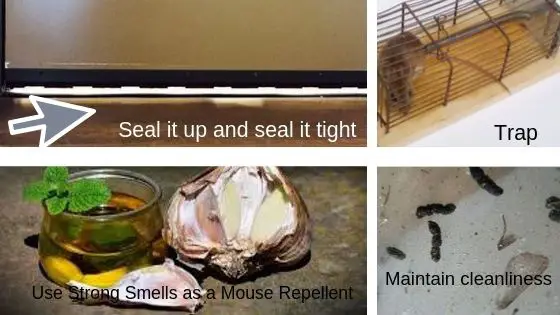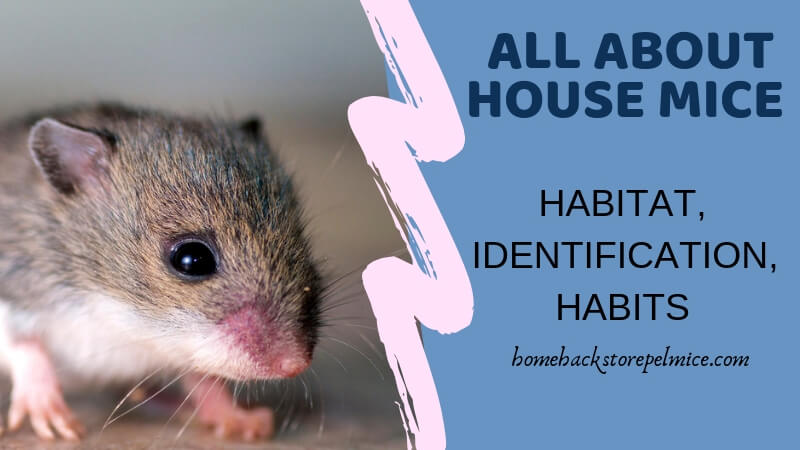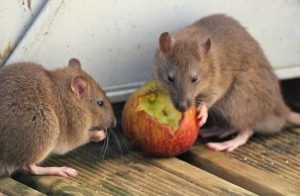Mus domesticus or the house mouse as it is more commonly known as is a seemingly innocent and cute little mammal that we often see in our homes and neighborhood. But don’t let the adorable looks of the house mice fool you! Not only do they ravage and plunder your home, but are also dangerous.
Humans have been plagued with house mice problems since generations. If you thought that mice are a menacing problem common only to the present generation, you need to think again. Believe it or not, humans have been facing mice trouble since the last 15,000 years! A study conducted by the PNAS-Proceedings of the National Academy of Sciences of the United States of America found the mice co-habited Israel’s Jordan Valley when the man was just a prehistoric hunter-gather.
It is important to have information and knowledge about these ghastly creatures if you want to succeed in keeping them out of your home. It is essential to have information on these vital details:
- Identifying house mice
- Different types and species
- Life span and breeding
- Habitat
- Food Habits
- Habits and Behaviour
- Signs of Mouse Infestation
- Damage caused by the house mouse
- Dangers of having mice in the house.
Here is a complete guide on everything you need to know about house mice – Habitat, Identification, Habits, and Remedies. And also some little known and fun house mice facts!
How do I identify house mice?
This mouse is a small rodent. The Cumbria Biodiversity Centre in the UK has enlisted ways of identifying the common house mouse. It can be easily distinguished because of some of its typical features like:
- Pointed snout or nose
- Large and round ears
- Bulging eyes
- Large tail
- High-pitched sound
House mice differ in color, but the most commonly seen ones are grayish-brown in color. They may also differ in length and size. They range from a length of 3.5 inches to 7 inches in some cases. It may weigh about 11 to 22 grams. The size of the tail depends on the size of the body. The larger the mouse, larger will be its tail. Did you know that some of these mice have tails that are as long as their bodies?
Which are the different types and species of house mice?
The three most commonly found species are:
- South-eastern Asian house mouse: commonly found in Southern and South-eastern Asia;
- Western European house mouse: it includes sub-species like the laboratory mouse and the fancy mouse. This species is commonly found across South-western Asia, North America, South America, and Africa and as the name suggests Western Europe. The Laboratory mouse is widely used by humans for scientific research in a wide variety of fields like—medical research, psychology, and even genetics. The fancy mouse, on the other hand, is a domesticated species. A lot of people keep this type of house mice as pets.
- Eastern European house mouse: native to eastern Europe and northern Asia
- South-western Asian house mouse: it is commonly found in Central Asia
- Pygmy house mouse: It is a dark gray-brown colored house mouse and a short tail. Along with the Arabian Peninsula and Madagascar, it is also commonly found in Texas, Arizona, and New Mexico in the US.
How long do the house mice live?
A house mouse living in the wild will only live for approximately one year because of harsh environmental conditions and increased danger of predators. Those living in human habitats are less exposed to predators and have better living conditions. The house mice’s lifespan in areas of human settlements may be two or three years.
Scientific researchers have also been able to create genetically engineered house mice that may live longer than their natural counterparts. Researchers at the National Institutes of Health (NIH), USA have been able to create genetically engineered mice that may live 20% more.
Mice can reproduce at an alarmingly fast rate. House mice’s breeding takes place at a very rapid rate, so a lot of people call them by the name of “mammalian weed”. The gestation period is just about three weeks, so a female mouse can give birth to about 5 or 6 cuddly critters at a single time and about 10 such litters in its comparatively short life span. That makes it about 60 mice offspring from each mouse in a year. And let’s not forget that these babies will be reproducing in as soon as six weeks of being born. That is indeed a lot of house mice babies to get rid of!! House mice in cities breed throughout the year and unlike their wild cousins, they may even reproduce during the winter months.
Habitat—where do house mice live?
Mice need to eat several times a day, so most wild mice build their homes near a food source. They prefer to stay near granaries, homes, farms, hotels, restaurants, fast-food places, fields and even schools. According to research conducted by the National Center for Biotechnology Information (NCBI), house mice prefer to live in close proximity to humans.
Mice also prefer to live in dark areas with little light due to their nocturnal nature. They do not like cleanliness and hygienic conditions. House mice infestation is very common in dimly lit basements, attic and near trash-cans and garbage disposal areas. Very often they may also be found under kitchen sinks, food storage cabinets and in shoe racks.
Food Habits – What do house mice eat?
Researchers at the University of California’s Integrated Pest Management (UCIPM) have observed that these mice will sample a wide variety of food. However, the most preferred house mice diet consists of fruits, seeds, grains, and other plant matter. Most of these are omnivorous. Those living in cities may eat almost anything they may come across including chocolates, candies, nuts, and different types of meat. House mice are voracious eaters due to their very high metabolism rate. Often they have also been caught eating packaged food and pet food. They may eat around 15 to 20 times a day.
Did you know that it is a myth that mice love eating cheese? In reality, mice don’t like cheese at all and may even run away from strong smelling cheese varieties.
The house mouse requires very little water for survival. In fact, its kidney system is similar to the desert mouse. As published in an article titled, “The Physiology of the House Mouse” in the Scientific American Journal, the little house mouse can survive for long hours with little or no water. It can also thrive in very dry conditions due to its amazing water conservation capability.
Behavior Habits – Are house mice blind?
We’ve all heard the story, “Three Blind Mice” in our childhood. In reality, mice are not really blind. They have very weak eyesight and can see objects that are only 1 to 2 feet away. They are also color blind.
But they make up for their weak eye-sight by a very strong sense of hearing, motion, and smell. With the help of their protruding eyes, they can detect motion as far as 40 feet away! Due to their extra strong olfactory senses, they hate strong and pungent smells. They simply detest strong smell like that of peppermint oil, naphthalene balls, and ammonia.
They are also nocturnal by nature and prefer to move around under the dark shadows of night. Plus, they are great explorers. They are great at adapting to new conditions and often memorize their new conditions while looking for food, shelter, and water.
They are very active creatures. They are fantastic jumpers. They can jump nearly 18 inches in the air. Also, they can jump down 12 feet without injuring themselves. They are also great climber and swimmers. A mouse can balance itself perfectly using its tail, helping it to travel easily across very thin wires and narrow ropes.
Male house mice are known to attract their female mate by emitting their own ultrasonic songs. University of Toronto’s research scientist Dr. Haoran Wang has conducted extensive research on the ultrasonic vocalizations used by male house mice in wooing their mates.
Signs of house mouse infestation—how do I find the mice in my home?
Mice are nocturnal creatures. They are usually not seen during the day. So how do you find out about house mouse infestation in your home? Just as a criminal leaves behind clues, these rodents behind many signs in your home. Here are some signs that are sure-shot signs of house mouse infestation:
Mice droppings and urine: The first thing to look out for is house mice droppings, hair, and urine. The easiest way to differentiate between mouse dropping and insect dropping is that mice droppings are longer and larger than that of insects. Also, lookout for a strong and musky smell which is usually that of mouse urine. A lot of times, urine stains can also be seen on the flooring, furniture, and carpets.
Damage to furniture: Other telltale signs of mice can be -chewed furniture, shredded wires, torn bits of paper, and nibbled carpets to name a few. Gnawing marks seen on walls, doors, corners, carpets, and stored foods are also an indicator of a house mouse infestation.
Marks and holes: A lot of times mice also leave behind little bite marks and holes in walls and floorboards. Smudge marks left behind as a result of oil and dirt from the mouse’s fur can also be seen of tracks frequented by the house mouse.
Sound indicators: You may also want to pay heed to sounds indicators like queer scratching, gnawing, climbing, and scuttling sounds that you may hear especially at night.
Damage caused by the house mouse:
Mice can cause economic damage as well as physical damage to both commercial organizations and private homes.
House mice may also nibble away on expensive machinery and equipment causing major financial damage to the owners. Sometimes, they eat away at the seeds implanted for harvesting causing major damage to crops. They may gnaw at storage containers, wiring, and packaging materials in warehouses leaving behind a trail of destruction. Frayed wires are also a short-circuit hazard and may also cause a fire.
A house full of these rodents is also sure to have a lot of damage. They feed on stored food and pet food, contaminating it with their hair and urine. It may damage kitchen equipment, furniture, carpets, paintings, sculptures, toys, and almost anything that it may be able to access. Piping and insulation are also damaged by their sharp teeth.
Dangers of having mice in the house—do house mice spread diseases?
All of us know that mice are dangerous to human health. Do house mice have diseases? House mice diseases or diseases caused due to their parasites may be transmitted to humans or pets in our homes. According to the Centers for Disease Control and Prevention (CDC), these diseases spread to humans through contact with their saliva, urine or feces, mouse bites and occasionally due to contact.
Among the most common house mice diseases isaresalmonellosis (food poisoning). Apart from this, these rodents also cause lymphocytic choriomeningitis. Cases have been reported where areas with a high population of house mice also report the high number of cases of rickettsialpox. The Salmonella bacterial infection is spread by mice that nibble away at uncovered food. It leads to severe food poisoning in humans causing stomach cramps, diarrhea, and vomiting. Bubonic plague is also spread through mice. It is a fatal blood disease that is caused by the fleas found in mice.
They may also cause leptospirosis, rat bite fever, and tapeworms. They are also carriers of organisms that cause a fungal skin disease known as ringworm in humans. In rare cases, house mice may also cause swine dysentery, which is a serious bacterial disease.
House mice hantavirus claims are completely false. Contrary to popular belief, hantavirus is not caused by house mice but is in reality spread by its cousins the deer mice.
Winning the battle against house mice – how to keep them away from your home?
Whether it’s Mickey Mouse or Jerry Mouse, the cuddly critter looks good only on television. If you want a house free from the house mouse, remember to follow these easy steps:
- Seal: Don’t let the mice enter your home. Seal it up and seal it tight!
- Trap: Use mouse traps to trap the mice inside your home.
- Clean: Maintain cleanliness and use toxin-free oils to deter them.
- Deter: Use natural remedies like peppermint oil to repel mice away.

We hope this information helps you differentiate house mice from others, and understand more about them.





